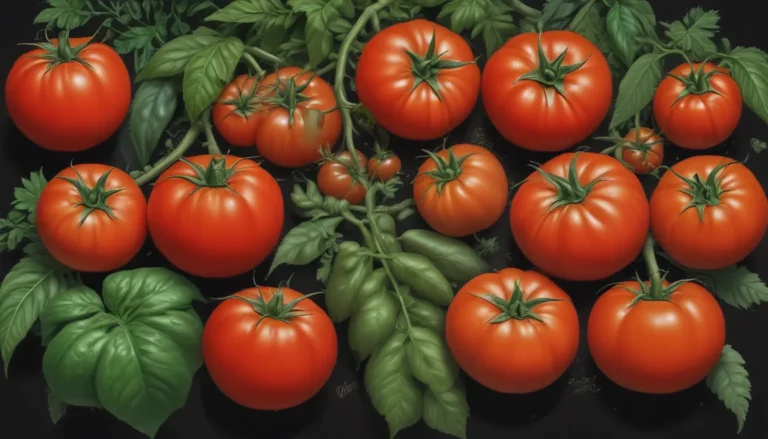Planting and Growing Scrumptious Summer Squash: A Comprehensive Guide

If you’re a veggie garden lover like me, you probably can’t get enough of summer squash. From thin skins to versatile flavors, tender flesh, and bold colors, summer squash has so much to offer. Whether you’re new to growing this garden favorite or a seasoned pro looking to improve your harvests, this guide is for you. Let’s dive in to learn all about planting and growing scrumptious summer squash.
What You’ll Learn
- The Best Cultivars to Grow
- How Many Plants Are Enough?
- Planting in the Perfect Place
- Starting Your Seeds
- Care Throughout the Summer
- Pests and Diseases
- Harvest Tips
- Uses for Older Squash
- Eating the Flowers
- Other Recipe Ideas
- So Many Options to Grow and Enjoy
Are you ready to discover just how easy it is to grow and enjoy various varieties of summer squash? Let’s get started!
The Best Summer Squash Cultivars to Grow
With multiple types of summer squash to experiment with, here are a few well-loved varieties to consider for planting:
Patty Pan
Patty Pan, also known as scalloped squash, comes in various shades and is best enjoyed when the fruits are around 5 inches across. Perfect for stews and roasting alongside root vegetables, this variety is a favorite among many gardeners.
Yellow Crookneck
Yellow Crookneck squash, with its bright yellow color and curved neck, is a classic favorite. Ideal for stir-frying or adding to sautés, this variety is a staple in many summer dishes.
Zucchini
Zucchini, the common green-skinned squash, is versatile and can be used in a variety of dishes. From slicing for sautés to spiralizing for noodles, there are endless ways to enjoy this summer squash.
In addition to these popular varieties, other summer squashes like Calabash, Cousa, Fortune, Loofah, Parador, Sunburst, and Zephyr offer unique flavors and textures to explore in your garden.
How Many Plants Are Enough?
When it comes to planting summer squash, one plant can typically feed an average family of four. However, planting more than you need can be a great way to experiment with different varieties and share your harvest with others. Remember that summer squashes reach maturity at a younger stage than winter squashes, so plan accordingly.
Planting Summer Squash in the Perfect Place
Whether you’re starting your seeds indoors or direct sowing, planting summer squash in a suitable garden plot is essential for a bountiful harvest. While summer squash is forgiving and can grow in various soil conditions, a pH of 6 to 6.5 is recommended for optimal growth.
Before planting, determine whether your squash variety is a bush type or vine type to ensure proper spacing. Bush types are ideal for raised beds, while vine types require more space to spread out.
Starting Your Seeds
Whether you choose to start your seeds indoors or directly sow them, proper seed starting techniques are crucial for success. Summer squash seedlings should be started indoors 3-4 weeks before transplanting, with peat pots and potting mix being ideal for seed starting.
Once your seedlings are ready, transplant them into the garden when the soil temperature reaches 70°F or higher. Remember to consider spacing requirements based on the type of summer squash you’re growing.
Care Throughout the Summer
To ensure your summer squash plants thrive, provide them with adequate heat, water, and sunlight. Here are some additional care tips to keep in mind for optimal yields:
Irrigation
Squash plants require regular watering, especially during the peak season. Watch for signs of wilting and water in the morning to prevent stress on the plants. Avoid watering at night to reduce the risk of mold and root rot.
Light and Heat
Plant squash in full sun and water at the base of the plants to prevent leaf burn. Use a soaker hose if you need to water during the hot hours of the day.
Fertilizer
Apply a complete fertilizer mix at 50% strength or use fish emulsion to provide essential nutrients for healthy growth. Additionally, mulching with organic materials can help retain moisture and improve soil quality.
Crop Rotation
Rotate your squash plants yearly to prevent the buildup of pests and diseases in the soil. Avoid planting summer squash in areas that recently housed melons or cucumbers to minimize risk.
Pests and Diseases
Even with proper care, squash plants may encounter common pests and diseases. Here are some tips to address issues like mold, squash vine borers, and blossom end rot:
- Mold: Reduce watering and improve air circulation around plants to prevent mold growth.
- Squash Vine Borers: Check plants regularly for signs of infestation and remove affected stems promptly.
- Blossom End Rot: Ensure adequate calcium in the soil and avoid over-fertilization to prevent this common issue.
Regular monitoring and proactive measures can help protect your squash plants from potential threats.
Harvest Tips
Harvest summer squash when it’s young and tender for the best flavor and texture. Most varieties are best when picked at 4-5 inches in length. Slice the fruit off the vine gently and avoid damaging the stem to prolong shelf life. Store harvested squash in the fridge for a day or two in a perforated plastic bag to maintain freshness.
Uses for Older Summer Squash
If you have mature squash fruits, there are still plenty of ways to enjoy them. Whether you use them as serving containers, garnish, eggplant substitutes, or ingredients in baked goods, mature squash can be a versatile addition to your kitchen.
Eating the Flowers
Don’t forget that squash blossoms are also edible and can be used in a variety of dishes. Be mindful of how many flowers you harvest to ensure continued fruit production, and enjoy them sautéed or fried in your favorite recipes.
Other Recipe Ideas
From vegan stuffed zucchini to rigatoni with sweet corn and zucchini, there are endless ways to enjoy summer squash in your cooking. Experiment with different recipes and flavor combinations to make the most of this garden delight.
So Many Options to Grow and Enjoy
With numerous varieties of summer squash to choose from, the possibilities for growing and enjoying this garden favorite are endless. Whether you stick with classic varieties like zucchini and yellow crookneck or try something new each year, there’s always something exciting to discover in the world of summer squash.
What’s your favorite type of summer squash? Are you planning to try any new varieties this year? Share your thoughts in the comments below and let us know how you plan to enjoy your summer squash harvest!
In conclusion, growing summer squash is a rewarding experience that offers delicious flavors, vibrant colors, and endless culinary possibilities. By following these tips and techniques, you can cultivate a bountiful harvest of scrumptious summer squash in your own garden. Happy planting and growing!
Remember to check out our other guides on common gardening topics like:
- Troubleshooting issues when growing zucchini
- A complete guide to growing winter squash
- Identifying and controlling common zucchini diseases
Together, let’s create a thriving garden full of healthy and flavorful produce!
Thank you for reading our comprehensive guide on planting and growing scrumptious summer squash. We hope you found valuable information to help you cultivate a successful garden! If you have any questions or additional tips to share, feel free to leave a comment below. Happy gardening!





